
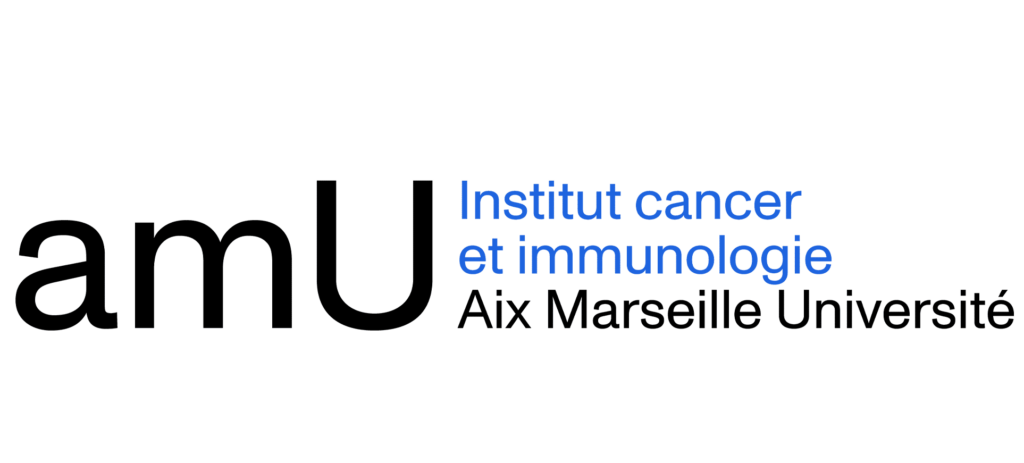
EAR IN A SHELL: MARINE IMMUNITIES & ECOLOGIES
Sonic Transcriptions Of Mollusk, Microbial, And Coral Genomes In Marine Soundscapes
[Examples to be added soon…]
Part of larger Conceptual Transplants Collective project presented at:
2025 UN Ocean Conference (Deep Ocean and Ways to Enable Its Sustainable Use), Nice, France.
Collaborative subproject with Christine Paillard (CNRS LEMARl, Brest), Jeremie Brugidou (CNRS, Marseille), and the Conceptual Transplants Collective.
Developed within a broader initiative exploring oceanic knowledge through transdisciplinary practice, this subproject transformed molecular data from marine organisms into immersive, biomarine tapestries. In collaboration with marine biologist Dr. Christine Paillard and in the context of an interdisciplinary collective of researchers and artists, I created sonic mappings of genomic sequences from Ruditapes philippinarum, a key species in Paillard’s research on Brown Ring Disease (BRD), alongside a wider set of marine and microbial DNA sources.
As a research-creation fellow in oncology and immunology (Institut Cancer et Immunologie and IMéRA), I am interested in how immune logics—like recognition, adaptation, evasion—manifest across different biological and ecological scales. Paillard’s work on the Ruditapes–Vibrio tapetis relationship offered a compelling immunological framework: a marine host-pathogen system shaped by dynamic exchanges between defense and infiltration—where microbial interactions and ‘intimacies’ structure both disease and resilience.
I designed a real-time audio mapping system to sonify a collection of genomic transcriptions from both ancient and modern clam specimens, including Haliotis tuberculata (modern European abalone) and archaeological Ruditapes shells. These were integrated with sequences from Vibrio tapetis, including its chromosome A, chromosome B, and virulence-associated plasmid P—featuring the virB4 Type IV secretion system. Layering Vibrio virulence sequences alongside mollusk host DNA allowed the sonification to stage a kind of microbial proximity: a coexistence of genetic codes entangled through disease, ecology, and time. A sonic architecture shaped by sequences that overlap across species and systems—making audible the ecological entanglements encoded in DNA.
In performance, the system allowed me to draw from this constellation of sonified sequences—activating and modulating them via breath and additional sensors connected to a wind synthesizer. This live, embodied interaction was layered with hydrophone recordings captured with Jeremie Brugidou in the Mediterranean, both along the Corniche and in a Marseille kitchen sink! These acoustic recordings were processed through spectral and granular synthesis to develop a mutable, oceanic sonic textural space, resonant with microbial intimacy and environmental entanglement.
A further dimension emerged through the inclusion of coral genomes—specifically Mediterranean coral species closely aligned with the Conceptual Transplants project’s focus on ecological fragility and coral transplantation. Sequences from Eunicella cavolini (yellow gorgonian), Paramuricea clavata (red gorgonian), and Corallium rubrum (Mediterranean red coral) were woven into the sonification system. These coral genomic transcriptions added an axis of symbolic and ecological complexity, anchoring the project in both biodiversity and vulnerability.
By rendering aspects of host-pathogen interaction and species decline in sound, the work proposes listening as a form of inquiry—one that engages porous boundaries between organism and environment, self and other, sound and structure. The sonification becomes a mode for sensing immunological permeability and ecological entanglement—across genomes, across scales, across time.
IN COLLECTIVE PROCESS, PERFORMANCE & PRESENTATION…
Selecting genomic data with Christine Paillard in my IMéRA studio…
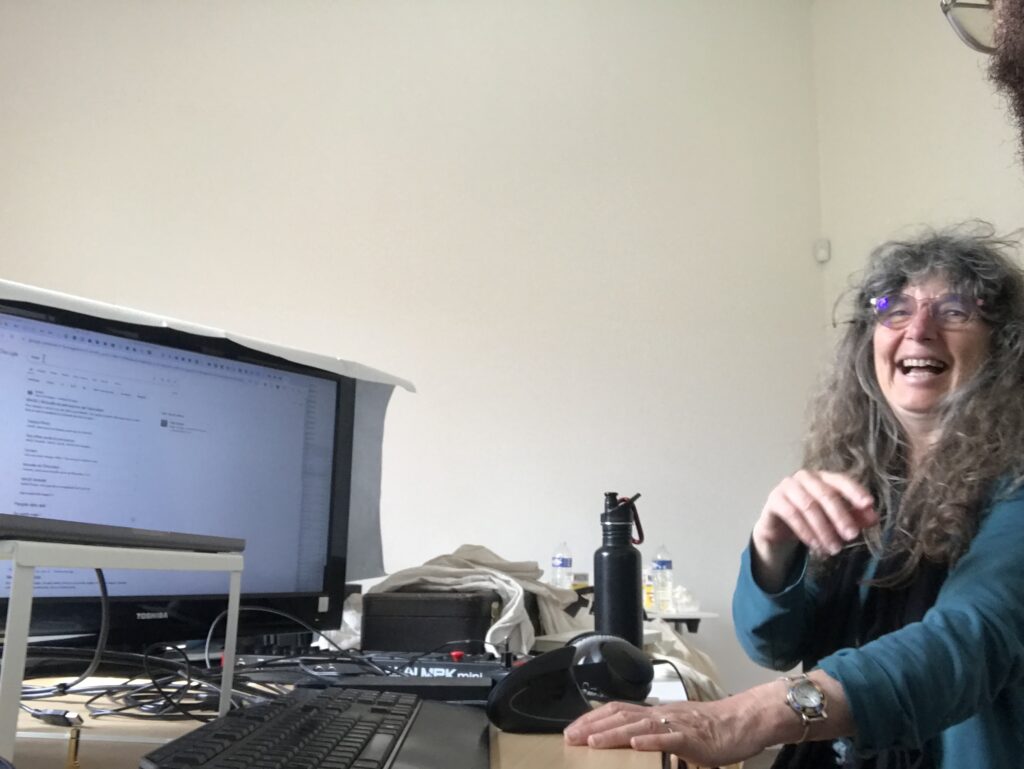

Capturing hydrophone & geophone audio with Jeremie Brugidou, in the Mediterannean at the Corniches, and in our IMéRA kitchen sink in Marseille…
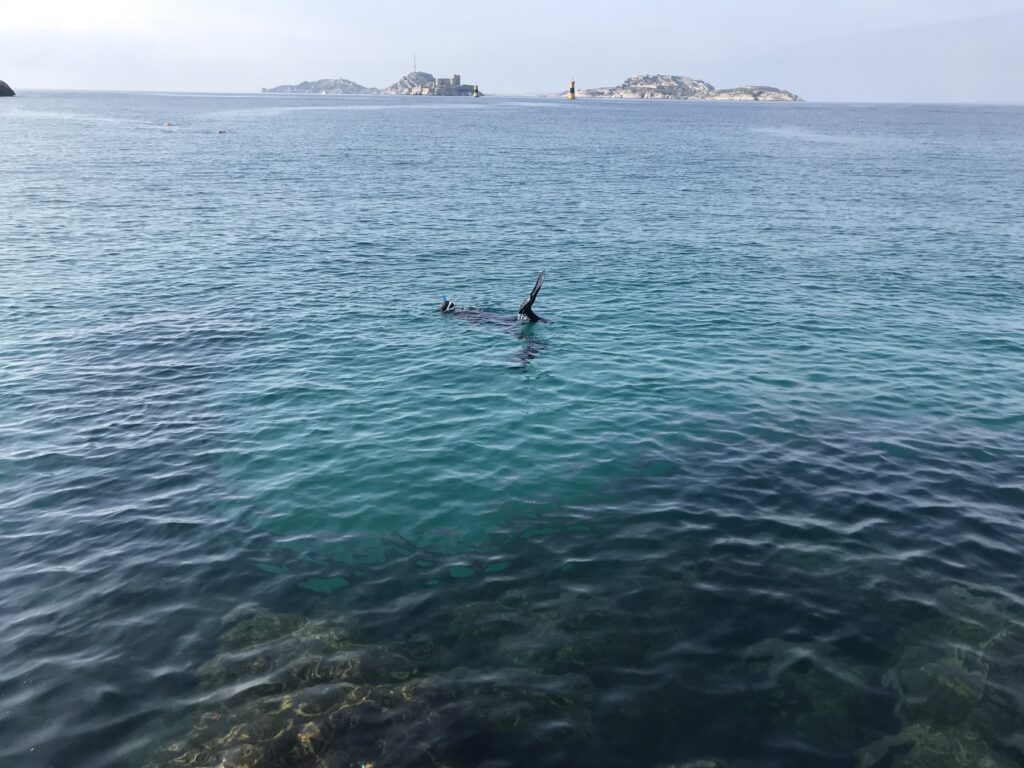

Showtime… I used the audio & sonification system in a collective electroacoustic audiovisual performance at the Observatoire de Marseille planetarium, with Diemo Schwarz (visual synthesis via CoCAVS, digital and spatial audio; IRCAM), Olympia Boule (voice and percussion), Aline Pénitot (multichannel audio), and Nils Raymond (audio engineering and technical system coordination)…


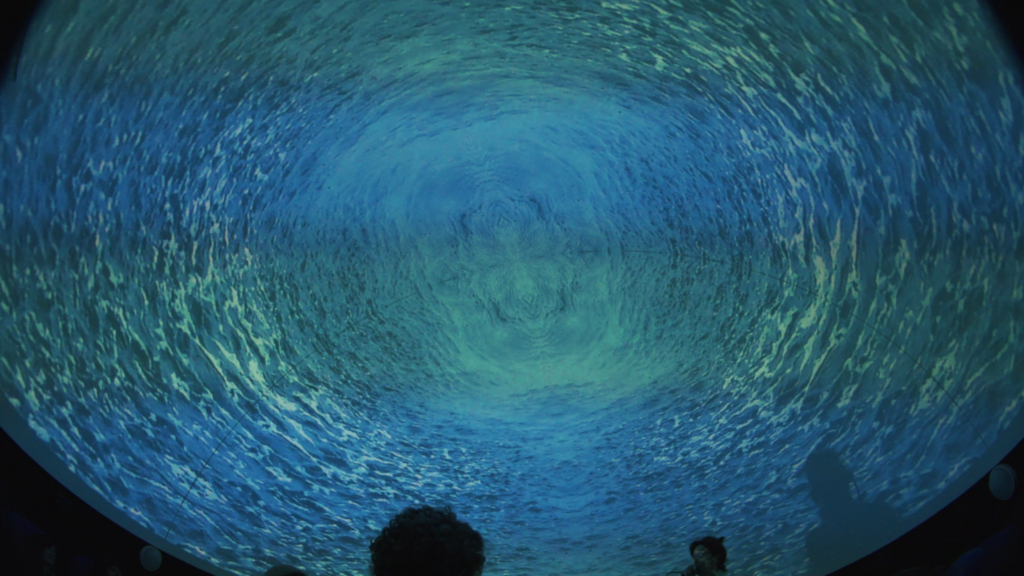

Conceptual Transdisciplinary collective research…
At SAM (Sea Atmosphere Service) at MIO (Institut Méditerranéen d’Oncéanologie) checking out “Sea Explorer” the French autonomous submarine glider…
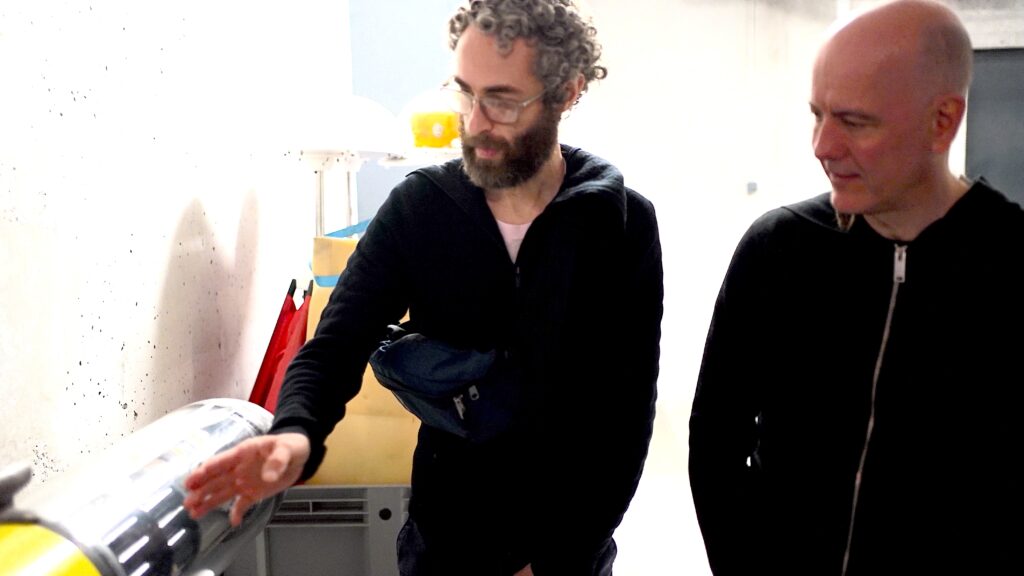
Ocean movement explorations at Camargo (led by Ambra Zambernardi), and mind mapping at IMéRA… 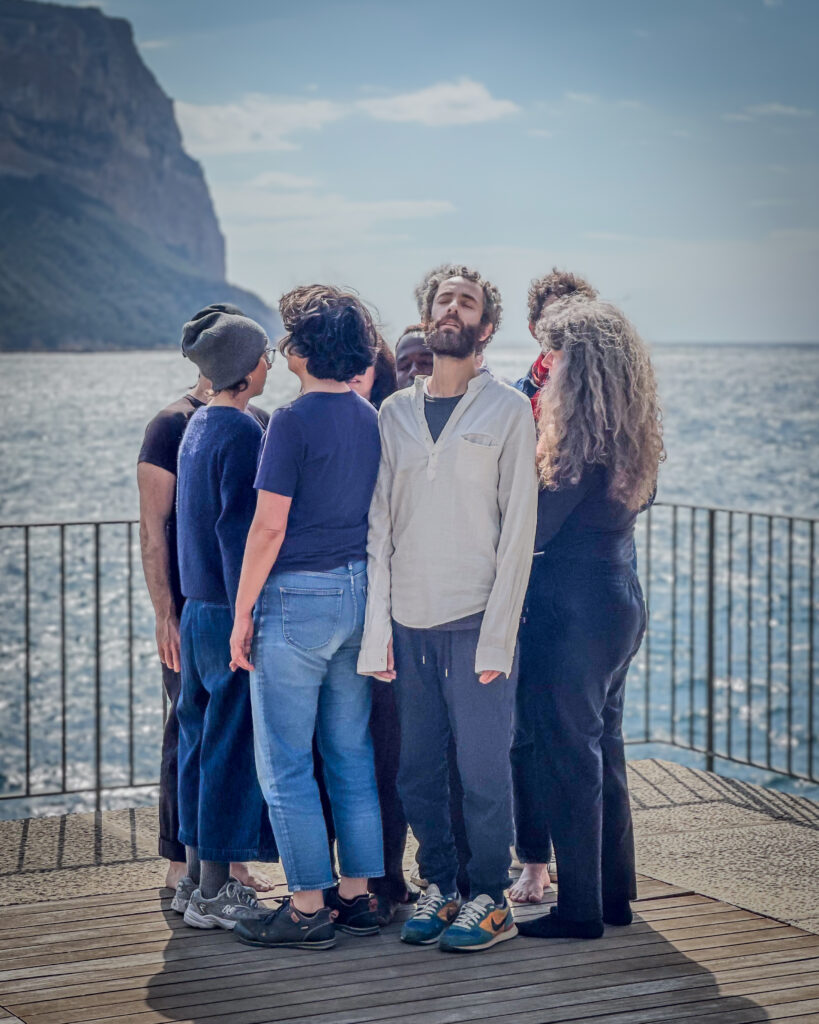
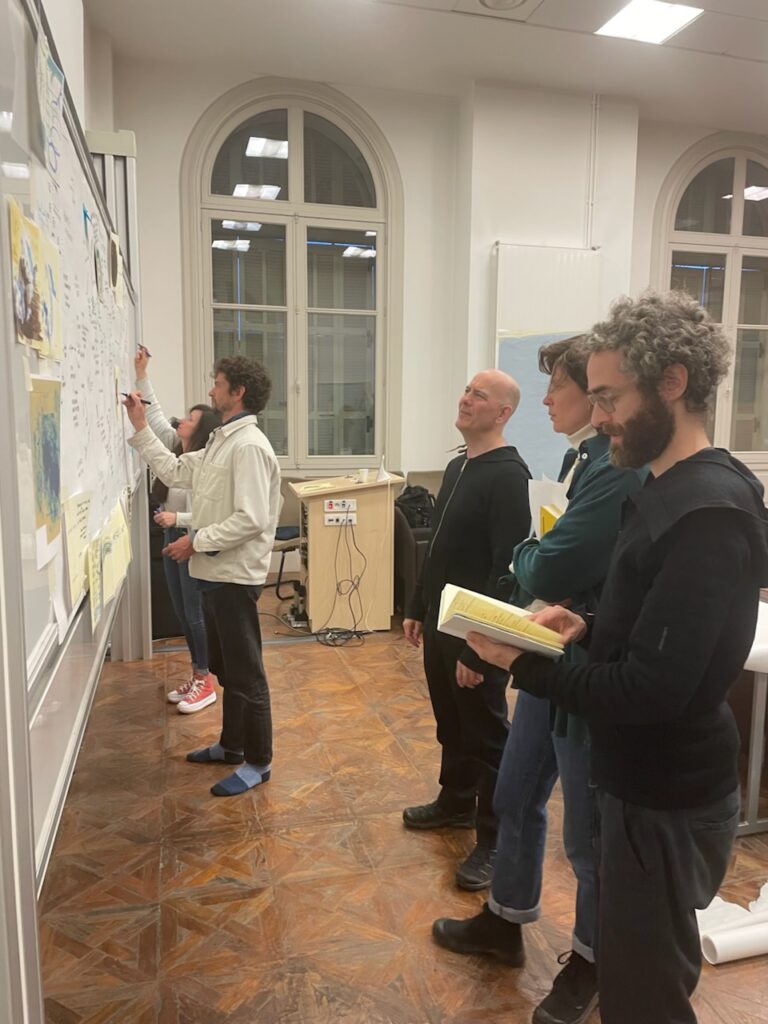
The performance was presented live with Diemo Schwarz (visual synthesis via CoCAVS, digital and spatial audio; IRCAM), Olympia Boule (voice and percussion), Aline Pénitot (multichannel audio), and Nils Raymond (audio engineering and technical system coordination). It emerged as part of the Conceptual Transplants Collective—a process-led group committed to shared sensory intelligence, interdisciplinary exploration, and the cultivation of collective imaginaries of the deep ocean.
The system was used in pieces presented at the 2025 UN Ocean Conference (Deep Ocean and Ways to Enable Its Sustainable Use) in Nice, France.
This work was developed within the Ocean/marine biology transdisciplinary collective with:
Callu Agnes (IHTP, l’École des chartes, MAD Paris, l’IIAC – CNRS/EHESS, Paris), Jeremie Brugidou (CNRS, Marseille), Olympia Boule, Constance Moréteau (IMéRA), Aurélie Moss (Ecole Nationale Supérieure des Arts Décoratifs), Christine Paillard (CNRS LEMARl, Brest), Aline Penitot, Maria Ptqk, Nils Raymond (IMéRA), Diemo Schwarz (IRCAM), Momoko Seto (CNRS/EHESS, Paris), Lara Tabet, Josune Urrutia Asua (IMéRA), Ambra Zambernardi (Università degli Studi di Torino)